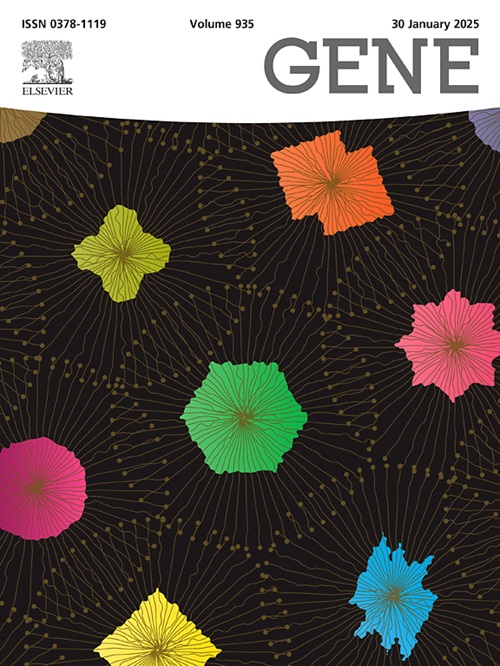对连续接种 BNT162b2 mRNA 疫苗后外周血细胞中的环状 RNA 图谱进行全长纳米孔测序。
IF 2.6
3区 生物学
Q2 GENETICS & HEREDITY
引用次数: 0
摘要
环状 RNA(circRNA)没有 5' 或 3' 末端;其独特的共价封闭结构可防止 RNA 被外切酶降解。与目前的标准线性 mRNA 相比,这些特点使 circRNA 具有较高的药物稳定性和生物稳定性。据报道,circRNA 的水平与某些人类疾病相关,使其成为新型疾病生物标志物和一类非经典的治疗靶标。本研究评估了 BNT162b2 mRNA 疫苗接种反应所依赖的内源性 circRNA。为此,通过纳米孔测序和转录组测序对外周血样本进行了 circRNAs 全长测序。研究人员从五名没有 SARS-CoV-2 感染史或接种过疫苗的医护人员身上采集了 15 份样本,包括接种前、第一批和第二批样本。共检测到 4706 个 circRNA;经过全长测序,确定 4217 个新型 circRNA 在接种疫苗期间特异性表达。这些 circRNA 富含应激颗粒集合体和 SARS-CoV-2 RNA 结合蛋白的结合基序,即细胞质多聚(A)结合蛋白 1 (PABPC1)、Pumilio RNA 结合家族成员 1 (PUM1) 和 Y 盒结合蛋白 1 (YBX1)。此外,489 个 circRNA 被鉴定为以前报道过的 miRNA 海绵。与人类血液单细胞 RNA 测序数据集中报道的 circRNA 相比,这些差异表达的 circRNA 可能来自血浆 B 细胞。在接种 SARS-CoV-2 BNT162b2 mRNA 疫苗前后观察到的 circRNA 表达差异。本文章由计算机程序翻译,如有差异,请以英文原文为准。
Full-length nanopore sequencing of circular RNA landscape in peripheral blood cells following sequential BNT162b2 mRNA vaccination
Circular RNAs (circRNA) lack 5′ or 3′ ends; their unique covalently closed structures prevent RNA degradation by exonucleases. These characteristics provide circRNAs with high pharmaceutical stability and biostability relative to current standard-of-care linear mRNAs. CircRNA levels are reportedly associated with certain human diseases, making them novel disease biomarkers and a noncanonical class of therapeutic targets. In this study, the endogenous circRNAs underlying the response to BNT162b2 mRNA vaccination were evaluated. To this end, peripheral blood samples were subjected to full-length sequencing of circRNAs via nanopore sequencing and transcriptome sequencing. Fifteen samples, comprising pre-, first, and second vaccination cohorts, were obtained from five healthcare workers with no history of SARS-CoV-2 infection or previous vaccination. A total of 4706 circRNAs were detected; following full-length sequencing, 4217 novel circRNAs were identified as being specifically expressed during vaccination. These circRNAs were enriched in the binding motifs of stress granule assemblies and SARS-CoV-2 RNA binding proteins, namely poly(A) binding protein cytoplasmic 1 (PABPC1), pumilio RNA binding family member 1 (PUM1), and Y box binding protein 1 (YBX1). Moreover, 489 circRNAs were identified as previously reported miRNA sponges. The differentially expressed circRNAs putatively originated from plasma B cells compared to circRNAs reported in human blood single-cell RNA sequencing datasets. The pre- and post-vaccination differences observed in the circRNA expression landscape in response to the SARS-CoV-2 BNT162b2 mRNA vaccine.
求助全文
通过发布文献求助,成功后即可免费获取论文全文。
去求助
来源期刊

Gene
生物-遗传学
CiteScore
6.10
自引率
2.90%
发文量
718
审稿时长
42 days
期刊介绍:
Gene publishes papers that focus on the regulation, expression, function and evolution of genes in all biological contexts, including all prokaryotic and eukaryotic organisms, as well as viruses.
 求助内容:
求助内容: 应助结果提醒方式:
应助结果提醒方式:


